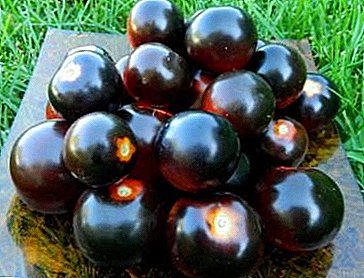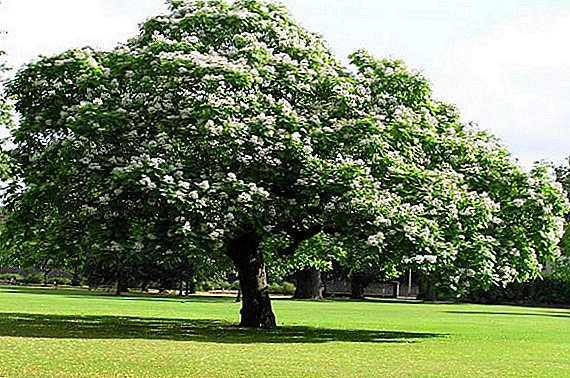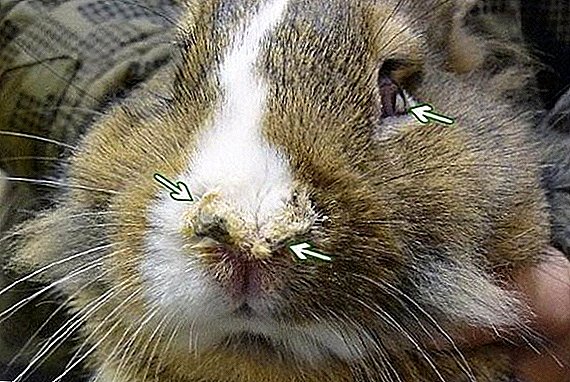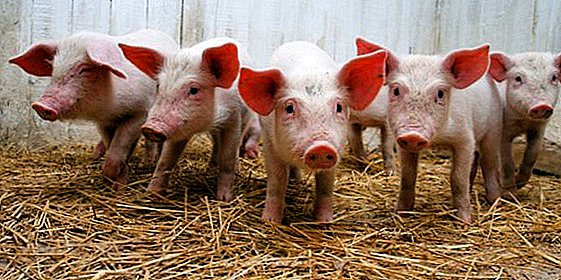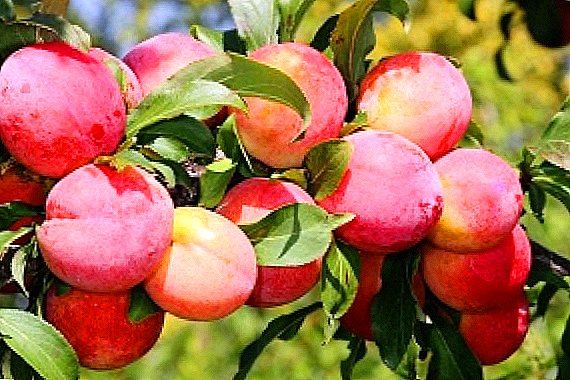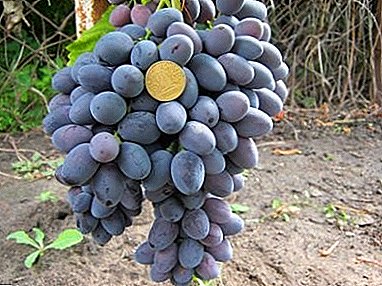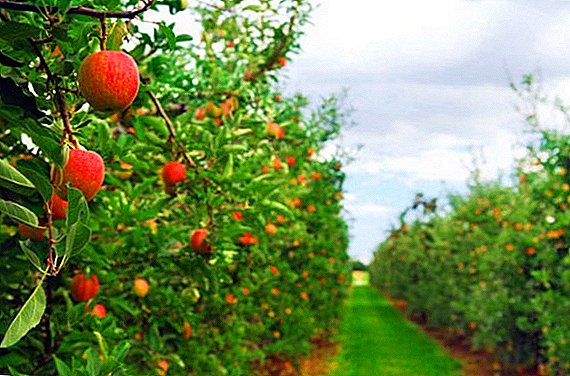 If you are not satisfied with something of the harvest that you get from your fruit tree, do not rush to remove it from the site and plant a new one in return. There are several excellent ways to improve the qualitative and quantitative indicators of fruiting - by vaccination to young adults of young cuttings and buds from other trees. This article is devoted to the topic of grafting trees in the spring and autumn, the best dates for performing this manipulation, it provides videos describing the technique, it tells how much time must pass for the vaccinations to be considered successfully completed.
If you are not satisfied with something of the harvest that you get from your fruit tree, do not rush to remove it from the site and plant a new one in return. There are several excellent ways to improve the qualitative and quantitative indicators of fruiting - by vaccination to young adults of young cuttings and buds from other trees. This article is devoted to the topic of grafting trees in the spring and autumn, the best dates for performing this manipulation, it provides videos describing the technique, it tells how much time must pass for the vaccinations to be considered successfully completed.
Budding of fruit trees
Budding is a method of grafting fruit trees, which involves the use of the eye (bud), cut with a small portion of the bark and a thin layer of cellulose. Refers to the best and most common methods of vaccination. Compared with other methods, budding provides a better survival rate, a much stronger grip of the scion (the culture that is grafted) and the rootstock (the culture to which the grafting is made) requires less grafting material and much easier to perform.
Did you know? According to Plutarch’s treatise “Table Talks”, this method of changing the natural properties of plants was known even in ancient times.The best time for doing budding is the period of active sap flow: in spring, when the leaves start to bloom, and in summer - from the last third of July until the first week of August.
Budding, carried out in the spring, is called a sprouting eye or kidney, and in summer - a sleeping eye or kidney. 
Fruit tree copulation
This technique involves the use of a young stalk with multiple buds. At the same time, an oblique cut is made on the prepared cutting, which should fit snugly to the same cut on the stock, after which fixation takes place with the help of various materials.
Important! Using this method of grafting, it is important to ensure that the diameters of the grafted cutting and the roots of the rootstock match or are approximately equal.
Copulation is carried out in the spring, when the buds are just starting to bloom. You can also carry out this method of grafting fruit trees before the start of sap flow. The ideal time to proceed with the operation is as soon as the temperature starts to allow it to work outside.
The first to instill stone fruit, such as cherry or cherry, a little later - pome (pears, apples).  The main rule of successful copulation is its implementation at the time when the stock begins to wake from hibernation, and the graft is not fully developed after the winter.
The main rule of successful copulation is its implementation at the time when the stock begins to wake from hibernation, and the graft is not fully developed after the winter.
The effect is achieved if the inoculum was harvested during the period of complete rest (in early spring, late winter or late fall) and until the moment of manipulation it was stored in cold conditions.
You will be interested to know about the details of grafting pears, apples, grapes.
Vaccination for bark
This procedure is recommended for implementation at a time when the process of rapid sap flow starts and the bark lends itself well to separation from the tree. The branch to be replaced is removed by cutting, retreating from the trunk by 20-30 cm, but you can choose a place to perform this procedure on the stump. Next, 3-5 cm should be pulled down from the place where the saw cut was made, make a cut of the bark with a sharp knife to the wood and carefully, trying not to damage, unscrew it from both sides.
Then they take the graft and press it to the place of the cut, pressing down on top of the separated piece of graft bark. The grafting site is wrapped in plastic wrap and, for better contact, the upper part of the film is additionally wrapped tightly with paper twine.
In place of the saw cut of the grafted branch, apply a layer of clay or garden pitch.
Learn more about feeding, pruning and spraying fruit trees.
Side Graft Vaccination
The optimal time for accomplishing this manipulation is the beginning of spring, namely the period when the buds begin to swell, but the process of active sap flow has not yet begun. 
This vaccine is good because it is fast and quite simple:
- At the lower edge of the harvested cutting, you must make an oblique cut, approximately the length of 3 diameters of a particular cutting.
- Then, a cut similar to the texture should be made from the back of the material that is to be attached. The overall shape of the finished scion should resemble a double-sided wedge.
- The top of the cutting should be cut 0.7-1 cm above the second bud.
- Form the side of the stock slots. To do this, it is necessary to position the knife at an angle of 15-30 °, in order to cut not only the bark, but also the layer of wood under it. Its depth should approximately correspond to the length of the slice that you previously formed on the handle.
- Next, the cutting is inserted inside the incision, while you need to strive to match the cambial layers in at least one of the planes. The ideal option would be to achieve full congruence of the surfaces.
- The place of vaccination should be wrapped with food wrap or vaccination tape, and the top of the graft graft should be smeared with boil.
Did you know? By this By means of grafting, you can control the process of crown formation by changing the angle of cut on the stock and the direction of the kidneys on the graft in the direction you want.
Graft Splitting
This grafting of fruit trees takes place in the spring before active sap flow has begun.  The skeletal branches of the stock should be cut down, leaving 20-30 cm to the trunk. Then, in the places of the saw cut, make longitudinal splits, the depth of which should be no more than 4-5 cm.
The skeletal branches of the stock should be cut down, leaving 20-30 cm to the trunk. Then, in the places of the saw cut, make longitudinal splits, the depth of which should be no more than 4-5 cm.
To do this, in the place where you intend to split, you first need to make a shallow incision.
Important! It is not recommended to touch during the manipulation of the slice with your hands in order to avoid infection. For the same reason, all tools must also be clean.Next, a knife or chisel is inserted into the incision, and splitting is formed with light but confident movements. To prevent the splitting from closing, it is recommended to insert a knife, a wooden wedge or a screwdriver into it.
Next, you should give the end of the cutting wedge shape. The length of the wedge should be approximately equal to the depth of the split. The cut that you formed on the end of the cutting should be perfectly flat, you can attach a knife edge to it, and if there are no gaps between it and the cut, you have done everything correctly. Next you need to remove the wedge from the cleft and quickly insert a cutting into it for the entire length of the cut. It is possible to graft two cuttings on one branch at once, for this purpose they should be placed on opposite sides.
This method of vaccination is best done with a partner, because the whole process should not take more than 30 seconds. Too slow action can lead to drying of the cut surface and its oxidation.
Interlacing (grafting)
The easiest, but rather rarely used method of vaccination. It implies splicing shoots that grow at a short distance next to each other. The graft is not cut at the same time, but is simply applied to the stock. This technique is hardly applicable for the purpose of grafting fruit trees. 
The technique is as follows:
- The stock and graft should be cleaned of bark, and form sections of the same width and length on both sections.
- Next, the graft and the rootstock are applied one to another in sections in such a way that their thin fertile layers under the bark are combined.
- The docking site is worn with special diligence with paper twine or graft tape and covered with plasticine or garden pitch.
- When the graft fully grows together with the stock, which often takes about 2-3 months, you can separate it from the mother plant. Before that, it is necessary to remove the material that was used for strapping, and to cut off the shoots that formed on the shoot.
 Remember the timing of these manipulations. It should not be carried out autumn grafting of fruit trees, although this period can be very successfully used for the preparation of cuttings. Do not be afraid to try and experiment with different ways - the result will not be long in coming.
Remember the timing of these manipulations. It should not be carried out autumn grafting of fruit trees, although this period can be very successfully used for the preparation of cuttings. Do not be afraid to try and experiment with different ways - the result will not be long in coming.

